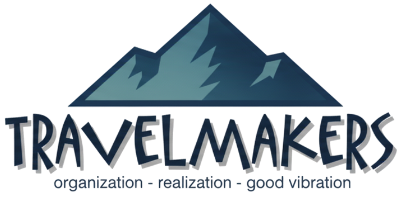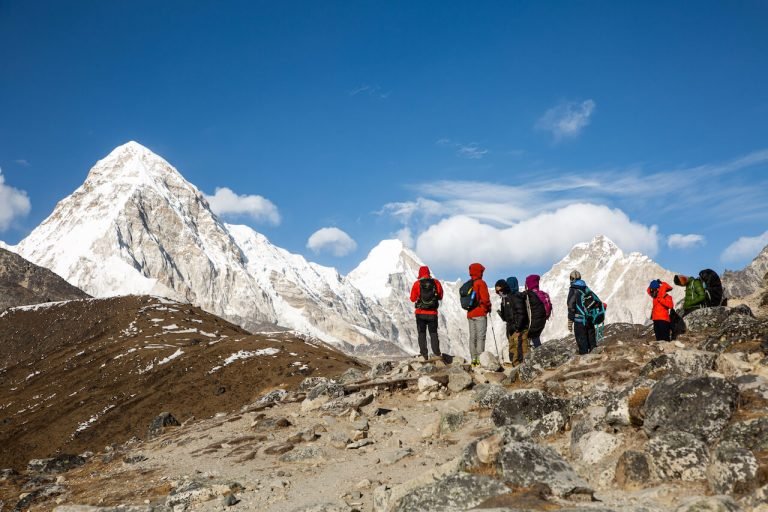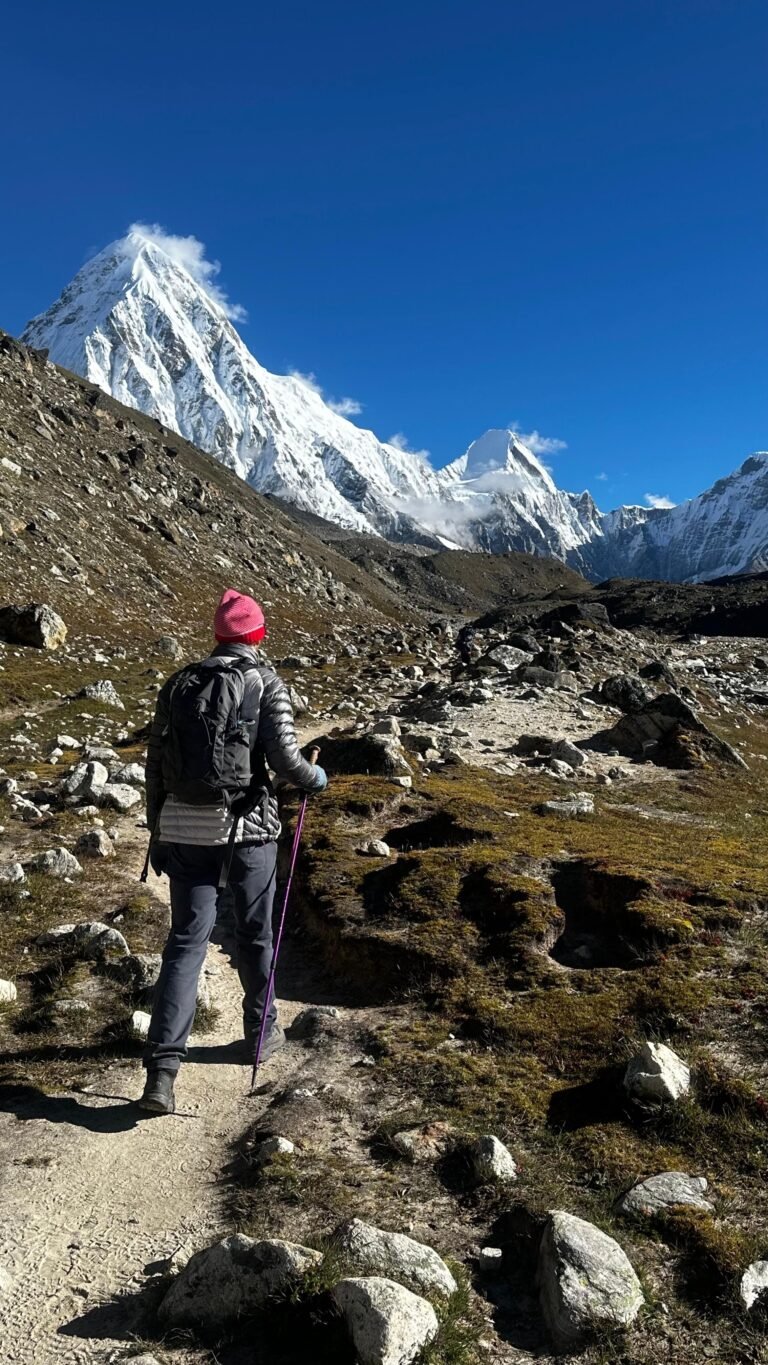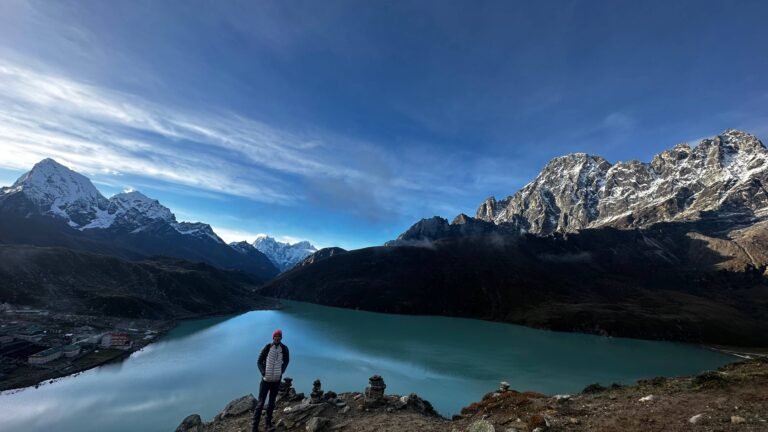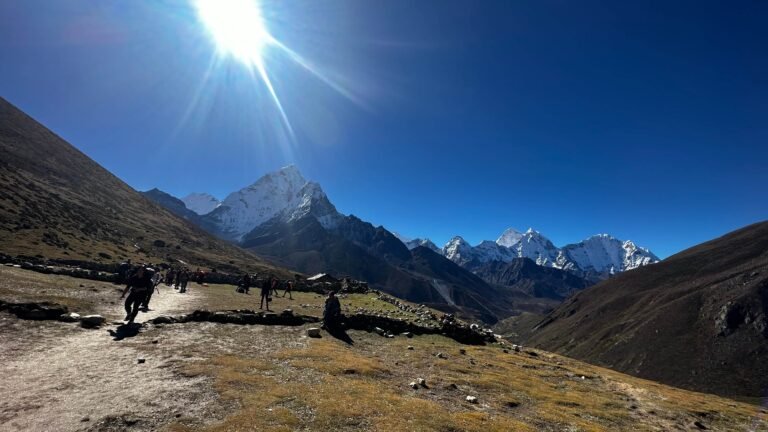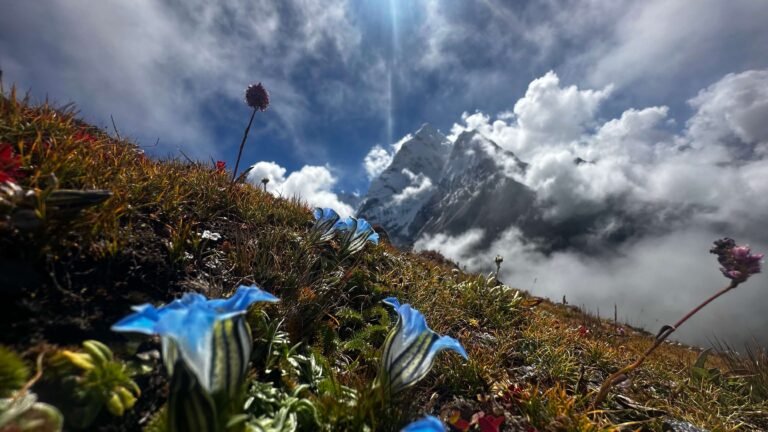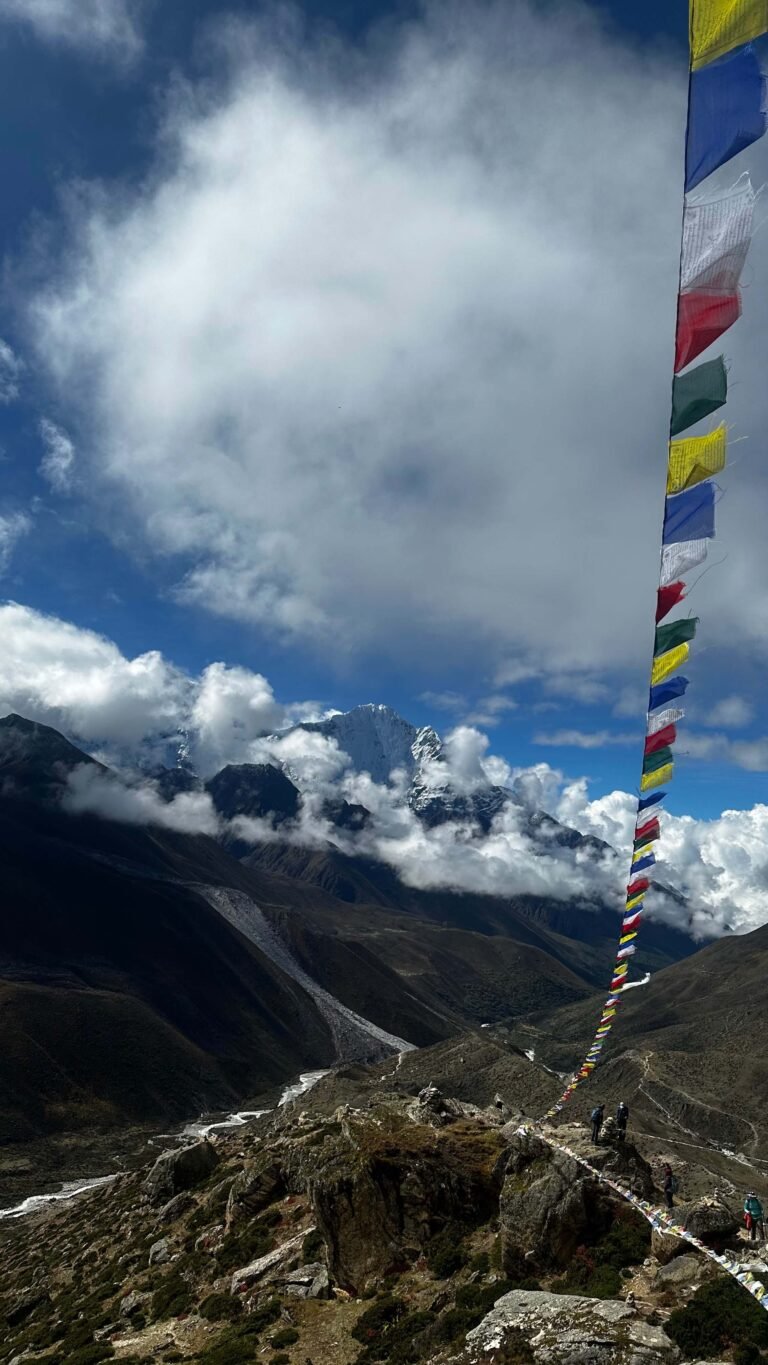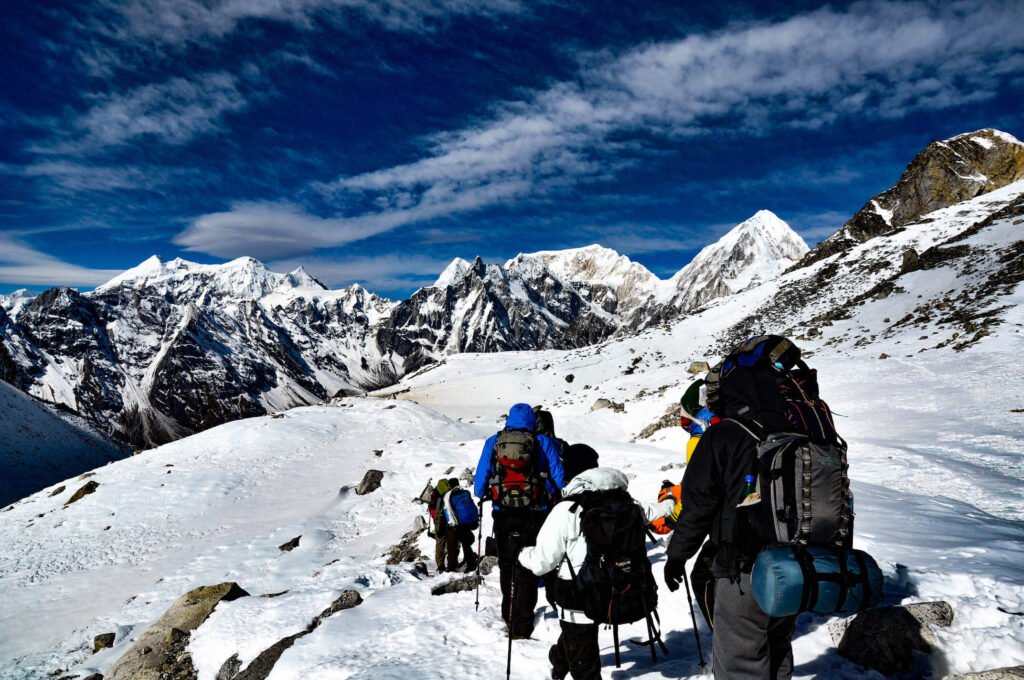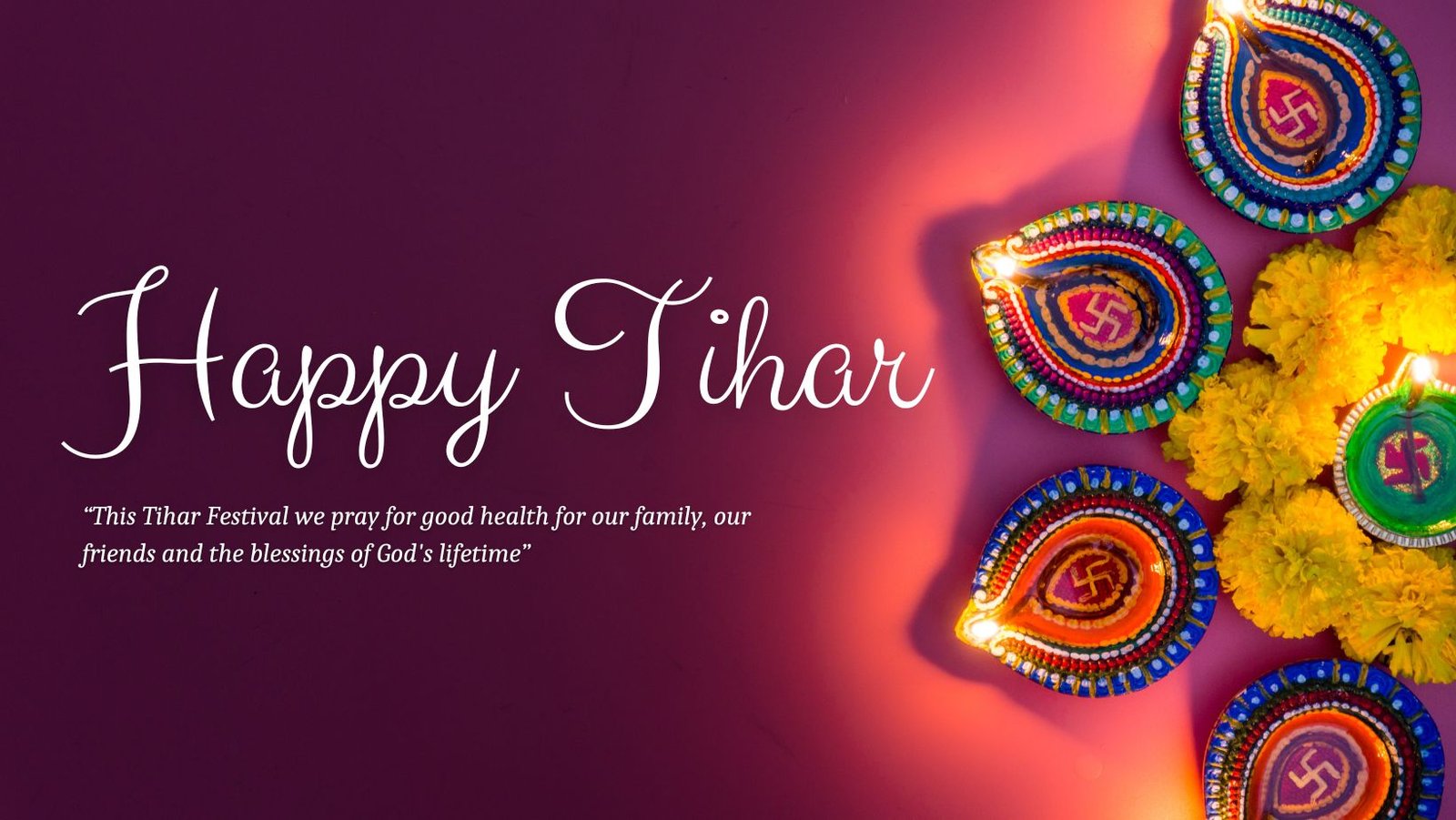- Overview
- Trip Outline
- Trip Includes
- Trip Excludes
- Gallery
- Booking
- FAQ
- Downloads
-
Lukla Flight: Begin the adventure with a thrilling flight to Lukla's Tenzing-Hillary Airport, one of the most challenging airports in the world due to its short runway and dramatic location on a mountainside. The flight itself provides breathtaking views of the rugged Himalayan range.
-
Namche Bazaar: The Sherpa capital and a major acclimatization stop. Namche is a bustling mountain town with cafes, gear shops, and a vibrant market, offering a glimpse into Sherpa culture.
-
Sherpa Culture and Heritage: Experience the warm hospitality, traditions, and monasteries of the Sherpa communities. Interact with locals and learn about their rich mountain heritage.
-
Tengboche Monastery: The spiritual heart of the Khumbu region. Located amidst a panoramic backdrop of the Himalayas, it's a serene and culturally enriching stop.
-
Everest Base Camp (EBC): Trek to the base of the world's tallest mountain, a dream destination for many and a significant achievement.
-
Kala Patthar: The best viewpoint for a close-up panoramic view of Mount Everest, especially during sunrise or sunset.
-
Cho La Pass: Conquer this challenging high mountain pass, enjoying majestic views of Himalayan giants.
-
Gokyo Ri: Ascend this peak for another awe-inspiring panoramic view of the Everest range. The sunrise and sunset views from here are truly magical.
-
Gokyo Lakes: Marvel at this series of pristine glacial lakes. The blue and green shimmering waters set against the stark mountain terrain is a sight to behold.
-
Flora and Fauna: Traverse through the Sagarmatha National Park, a UNESCO World Heritage Site, and spot diverse wildlife, while also passing through vibrant forests of rhododendron, pine, and birch.
-
Himalayan Panorama: Continuous vistas of iconic peaks like Everest, Lhotse, Nuptse, Makalu, Cho Oyu, and others accompany trekkers throughout the journey.
-
Physical Challenge: Embrace the challenge of high-altitude trekking, glacial crossings, and steep ascents, culminating in a profound sense of accomplishment at the journey's end.
Dive into a Mesmerizing 17-Day Adventure:
Arrival in Kathmandu (Day 1): Begin in the heartbeat of Nepal, the vibrant capital city, Kathmandu.
Preparation Day (Day 2): Ready yourself for the upcoming trek and ensure all is in order.
✈️ Fly to Lukla and Trek to Phakding (Day 3): Take off from Kathmandu for a picturesque flight to Lukla, then set foot towards Phakding.
⛰️ Phakding to Namche Bazaar (Day 4): Traverse the majestic Himalayan paths as you elevate to the bustling Namche Bazaar.
Rest Day in Namche Bazaar (Day 5): Adjust to the altitude and delve into the charms of Namche Bazaar.
Namche Bazaar to Dole (Day 6): March towards Dole, witnessing the evolving landscapes en route.
⛰️ Phortse Thanga to Machhermo (Day 7): Elevate further to the panoramic sights of Machhermo.
Machhermo to Gokyo (Day 8): Reach the serene embrace of Gokyo, nestled by the mesmerizing Gokyo Lake.
Hike to Gokyo Ri (Day 9): Opt for a restful day or challenge yourself with a hike up to Gokyo Ri for unparalleled vistas.
Trek to Thangnang (Day 10): Journey onwards to the tranquil embrace of Thangnang.
⛰️ Trek to Dzongla via Cho La Pass (Day 11): Triumph over the Cho-La Pass, then settle in Dzongla.
Dzongla to Lobuche (Day 12): Reach Lobuche, with its horizon dominated by towering peaks.
Lobuche to Gorak Shep and Everest Base Camp (Day 13): Aim for Gorak Shep, then celebrate your ascent to the iconic Everest Base Camp.
⛰️ Gorak Shep to Kala Patthar and Pheriche (Day 14): Rise to the views from Kala Patthar and then journey down to Pheriche.
Pheriche to Namche Bazaar (Day 15): Descend to the comforts of Namche Bazaar, reflecting on your epic odyssey.
Namche Bazaar to Lukla (Day 16): As your trek winds down, head back to Lukla, the starting point of your mountainous journey.
✈️ Fly to Kathmandu (Day 17): Board your scenic return flight to Kathmandu, then relax and relive memories at your hotel.
Itineraries
Day 1
Arrival in Kathmandu

Your journey begins in the vibrant capital city of Nepal.
Day 2
Preparation Day

Get ready for the trek ahead with final preparations.
Day 3
Fly from Kathmandu to Lukla, trek to Phakding (2,652m/8,700ft)

Flight duration: 30 minutes
Trekking duration: 3-4 hours
Trekking distance: 8km
Highlights: Scenic flight, crossing suspension bridges over the Dudh Koshi river, and staying in a teahouse in Phakding.
Day 4
Trek from Phakding to Namche Bazaar (3,440m/11,286ft)
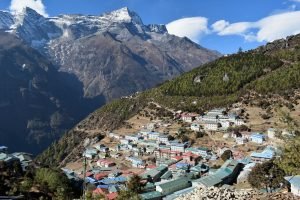
Trekking duration: 5-6 hours
Trekking distance: 11km
Highlights: Entering the Sagarmatha National Park, passing through several Sherpa villages, and reaching Namche Bazaar, the gateway to the Everest region.
Day 5
Acclimatization Day at Namche Bazaar (Optional Hike to Khumjung - 3,790m)

-
Optional Hike: 4–5 hours round trip, approx. 6–7 km
-
Visit: Khumjung Monastery, Hillary School, Everest View Hotel.
-
Viewpoint: Panoramas of Ama Dablam, Thamserku, and Everest.
Day 6
Trek to Tengboche (3,860m) or Debuche (3,820m)
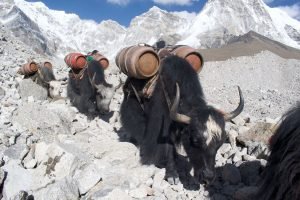
-
Trek Duration: 5–6 hours, approx. 9–10 km
-
Trail Info: Descend to Phunki Tenga then ascend through rhododendron forest.
-
Highlights: Tengboche Monastery with stunning mountain backdrop.
Day 7
Trek to Dingboche (4,410m)
-
Trek Duration: 5–6 hours, approx. 10–11 km
-
Trail Info: Gradual climb via Pangboche with constant views of Ama Dablam.
-
Zone: Entrance to the alpine region.
Day 8
Acclimatization Day at Dingboche
-
Hike: 3–4 hours round trip to Nagarjun Hill (5,100m)
-
Viewpoint: Lhotse, Makalu, Island Peak
-
Purpose: Essential acclimatization for high-altitude adaptation.
Day 9
Trek to Lobuche (4,910m)
-
Trek Duration: 5–6 hours, approx. 8–9 km
-
Trail Info: Pass memorial stupas at Thukla Pass
-
Views: Nuptse, Pumori, and Khumbu Glacier landscapes.
Day 10
Trek to Gorakshep (5,164m) & Optional Visit to Everest Base Camp (5,364m)
-
Trek Duration: 6–7 hours total, approx. 12–13 km
-
Trail Info: Rugged moraine paths along the glacier.
-
Highlight: Reach Everest Base Camp – a dream destination!
Day 11
Hike Kala Patthar (5,545m) & Trek to Dzongla (4,830m)
-
Kala Patthar Hike: 2 hours ascent, 1 hour descent
-
Dzongla Trek: 4–5 hours
-
Highlight: Epic sunrise views of Everest and descent beside Cholatse.
Day 12
Cross Cho La Pass (5,420m) & Trek to Thangnak (4,700m)
-
Trek Duration: 6–7 hours, approx. 8–9 km
-
Trail Info: Steep, icy pass crossing followed by rocky descent.
-
Highlight: Cho La Glacier, towering views of Cholatse.
Day 13
Trek to Gokyo (4,790m)
-
Trek Duration: 3–4 hours, approx. 4–5 km
-
Trail Info: Cross Ngozumpa Glacier
-
Highlight: Arrival at turquoise Gokyo Lake and views of Cho Oyu.
Day 14
Hike to Kalapatthar (5,545m/18,192ft) for sunrise views, trek back to Pheriche (4,280m/14,042ft)

-
Trek Duration: 6–7 hours, approx. 11–12 km
-
Trail Info: Scenic descent via Machhermo and Luza.
-
Landscape: From alpine terrain to lush valleys.
Day 15
Trek to Namche Bazaar (3,440m)
-
Trek Duration: 5–6 hours, approx. 10 km
-
Trail Info: Through Phortse Thenga and rhododendron forests.
-
Highlight: Back to lively Namche for warm Sherpa hospitality.
Day 16
Trek to Lukla (2,840m)

-
Trek Duration: 6–7 hours, approx. 18 km
-
Trail Info: Via Monjo and Phakding, final climb to Lukla.
-
Celebration: Final dinner to mark the end of an epic journey.
Day 17
Fly Back to Kathmandu

-
Flight Duration: 30–35 minutes
-
Service: Airport pickup and hotel transfer included.
-
Optional: Rest, shop, or explore Kathmandu’s heritage sites.
- Airport Transfers: Pick-up and drop-off services from and to the airport in Kathmandu.
- Accommodation: Hotel stays in Kathmandu and teahouse/lodge stays during the trek.
- Flight: Return domestic flights between Kathmandu and Lukla.
- Meals: Breakfast, lunch, and dinner during the trek. Breakfast while in Kathmandu.
- Trekking Permits: Sagarmatha National Park permit and Special Sherpa Permit.
- Guide and Porters: An experienced English-speaking trekking guide and necessary porters for luggage assistance.
- Wages and Insurance: Salaries, food, accommodation, and insurance for all staff.
- Orientation and Briefing: A comprehensive trek briefing upon arrival.
- First Aid: Basic first aid kit and necessary medicines for altitude sickness, minor injuries, etc.
- Local Transportation: Any necessary local transportation during the trek.
- International Airfare: Flights to and from Nepal.
- Visa Fees: Nepal entry visa fee.
- Travel Insurance: It is mandatory for trekkers to have travel insurance covering emergency evacuation, trip cancellations, injury, death, and other potential losses.
- Personal Expenses: Beverages, laundry, phone calls, internet, charging devices, and other personal expenses.
- Tipping: Tips for guide, porters, and other trek staff.
- Additional Meals: Apart from the meals mentioned in "Included."
- Additional Activities: Any activities not mentioned in the itinerary.
- Unforeseen Expenses: Costs arising out of unforeseen circumstances like landslides, weather conditions, or any other conditions beyond control.
- Equipment Rental: Any gear or equipment rentals.
- Bottled Drinks: Water, alcohol, or other bottled beverages.
The Everest Base Camp Trek is considered moderately difficult. It requires a good level of fitness and stamina, as you'll be trekking at high altitudes and ascending steep trails. Proper acclimatization and preparation are essential.
The best time for the Everest Base Camp Trek is during the pre-monsoon (spring) season (March to May) and the post-monsoon (autumn) season (September to November). These months offer stable weather conditions, clear skies, and favorable trekking conditions.
The Everest Base Camp Trek typically takes around 12-14 days, including acclimatization days. This allows for a gradual ascent and reduces the risk of altitude sickness.
Altitude sickness, also known as acute mountain sickness (AMS), can occur when ascending to high altitudes too quickly. To prevent AMS, it's important to acclimatize properly by taking rest days, staying hydrated, and ascending gradually. If symptoms worsen, descending to a lower altitude is crucial.
Teahouses or guesthouses are the primary accommodations along the Everest Base Camp Trek. These are basic but comfortable lodges that provide meals and a place to sleep. Facilities may vary, but most teahouses offer twin-sharing rooms with common bathrooms.
You need a Sagarmatha National Park Entry Permit and a Khumbu Pasang Lhamu Rural Municipality Entry Permit. These two permits are mandatory for trekking in the Everest region.
There is no specific age restriction for the Everest Base Camp Trek. However, it's important to consider the physical fitness and endurance of individuals, especially at higher altitudes. Consulting with a healthcare professional is advisable for older or younger trekkers.
Prior trekking experience is not mandatory, but it is recommended. Being physically fit, having experience hiking in varied terrains, and being mentally prepared for the challenges of high-altitude trekking will greatly enhance your experience.
A good level of cardiovascular fitness and stamina is required for the Everest Base Camp Trek. Regular exercise, including cardiovascular workouts and hiking practice, can help prepare your body for the physical demands of the trek.
There are medical clinics and basic emergency facilities available in some villages along the trail. However, it is highly recommended to carry a basic first aid kit and consult with a travel medical professional for personalized advice.
Yes, most teahouses offer charging facilities for a fee. However, the availability of electricity can be limited in some areas, and charging might not be available every day. Carrying spare batteries or a power bank is advisable.
Weather conditions in the Everest region can vary greatly. In the spring and autumn seasons, you can expect mild temperatures during the day, with colder nights at higher altitudes. However, weather conditions can change rapidly, and it's important to be prepared for colder temperatures and occasional rainfall or snowfall.
Yes, there are communication facilities available along the Everest Base Camp trail. Most teahouses have Wi-Fi services, but they may charge a fee for usage. However, the connectivity and speed can be limited, especially at higher altitudes. It's advisable to inform your loved ones that communication may be intermittent during the trek.
Yes, it is possible to hire a guide and porter for the Everest Base Camp Trek. Hiring a guide can provide assistance with navigation, cultural insights, and safety, while a porter can carry your heavy backpack, allowing you to trek with less weight. Hiring them can enhance your trekking experience and support the local community.
The major highlights of the Everest Base Camp Trek include breathtaking views of Mount Everest and other majestic peaks, visiting traditional Sherpa villages, immersing in the Sherpa culture, exploring Buddhist monasteries like Tengboche, trekking through the beautiful Sagarmatha National Park, and standing at Everest Base Camp itself.
Both options are possible. It is feasible to trek independently to Everest Base Camp if you have prior trekking experience, good navigational skills, and are well-prepared. However, joining a guided group trek provides numerous benefits, including a support network, experienced guides, organized logistics, and the opportunity to meet fellow trekkers.
Yes, there are alternative routes and side trips that can be incorporated into the Everest Base Camp Trek. Popular options include adding a trek to Gokyo Lakes, visiting the Everest View Hotel, or taking a detour to the beautiful village of Khumjung. These additions provide additional scenic views and cultural experiences.
Some essential items to pack for the Everest Base Camp Trek include trekking boots, warm clothing layers, a good-quality sleeping bag, a waterproof jacket, gloves, a hat, sunglasses, sunscreen, a water bottle, a headlamp, toiletries, and a first aid kit. It's important to pack light but adequately for changing weather conditions.
The budget for the Everest Base Camp Trek depends on various factors such as the season, accommodation choices, and personal expenses. On average, a budget of around $1,500 to $2,500 USD per person is reasonable to cover permits, food, accommodations, guides/porters (if hired), and miscellaneous expenses.
Respecting the local culture and customs is important during the Everest Base Camp Trek. Some key etiquettes include greeting locals with "Namaste," asking permission before taking photographs, dressing modestly, and respecting religious sites and objects. It's also advisable to follow the guidance of your guide regarding local customs and practices.
